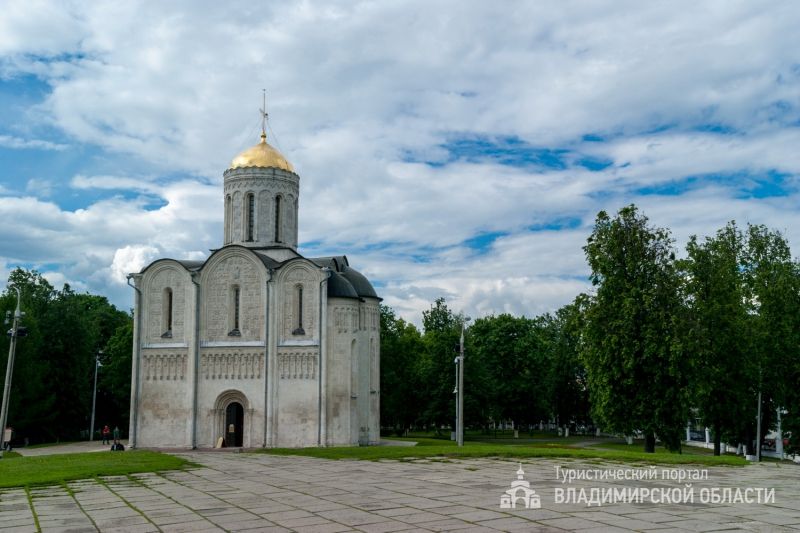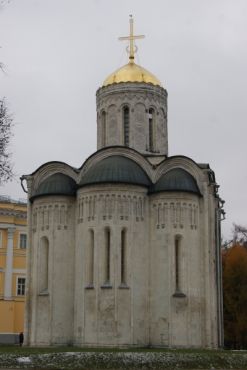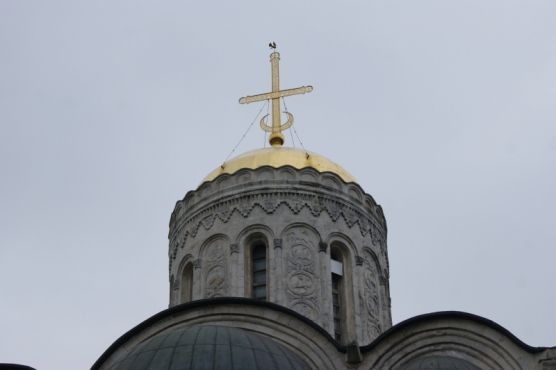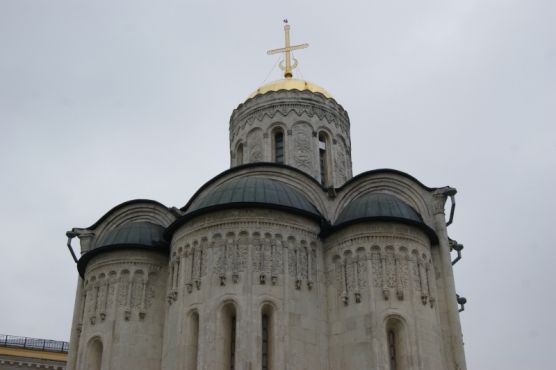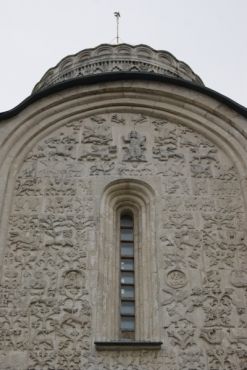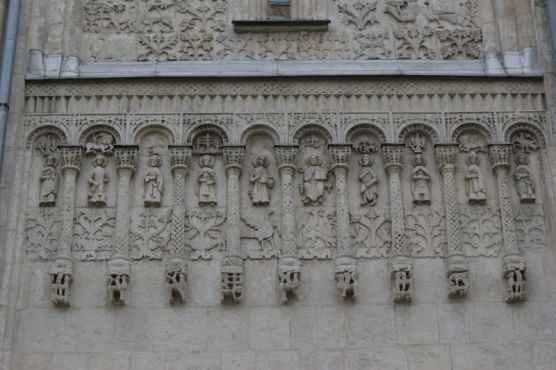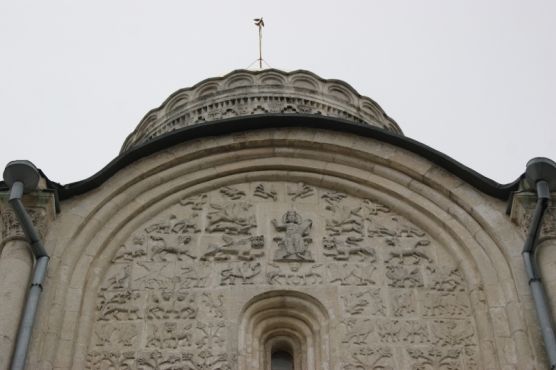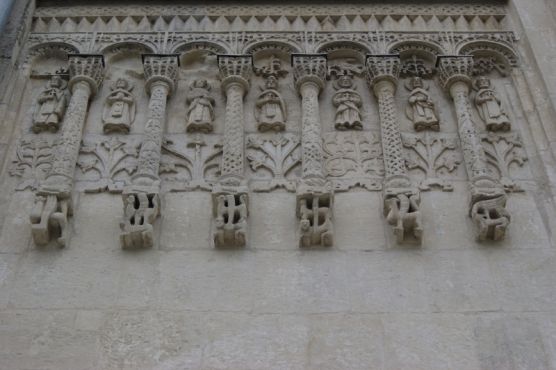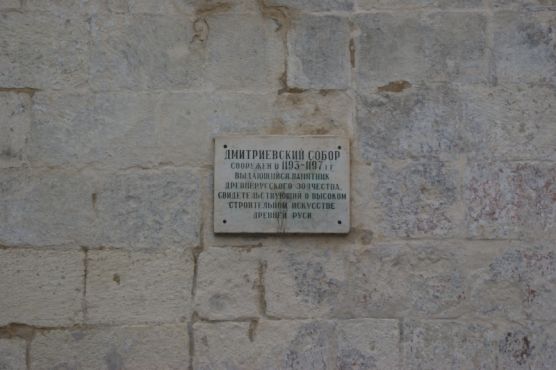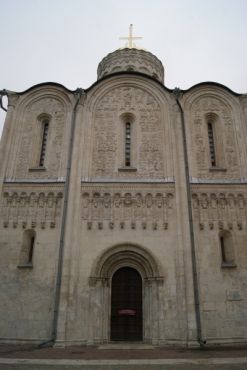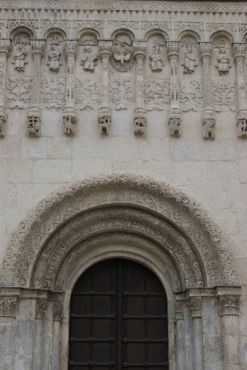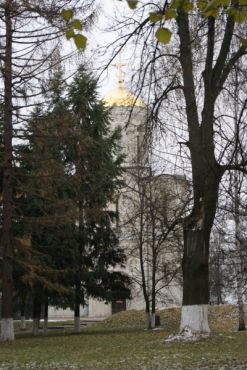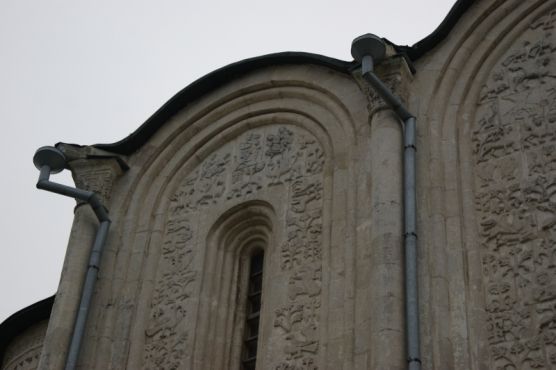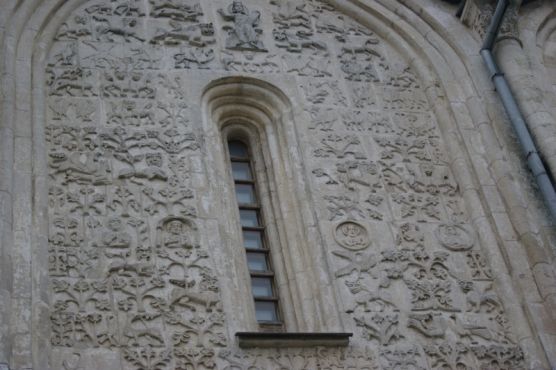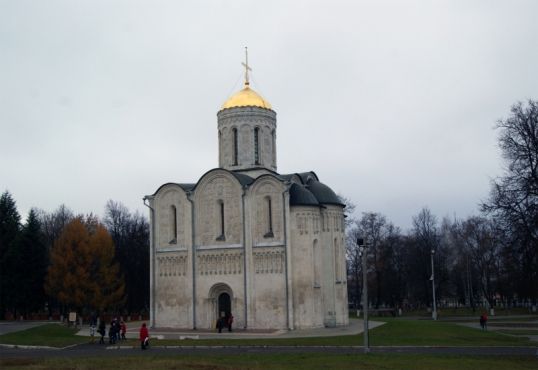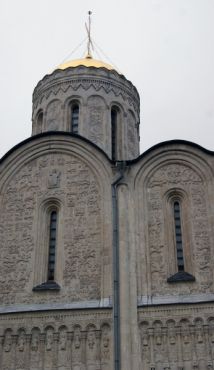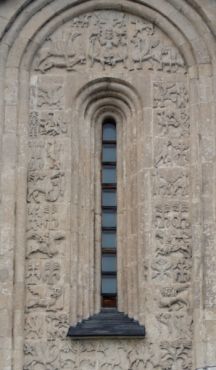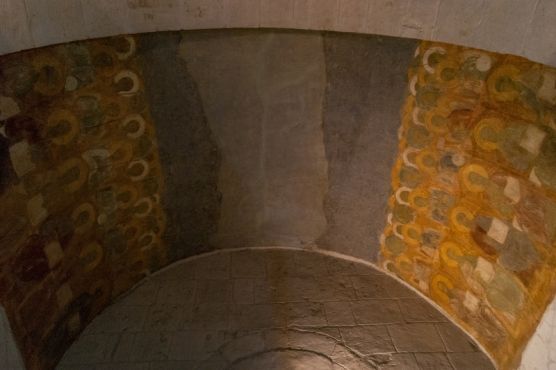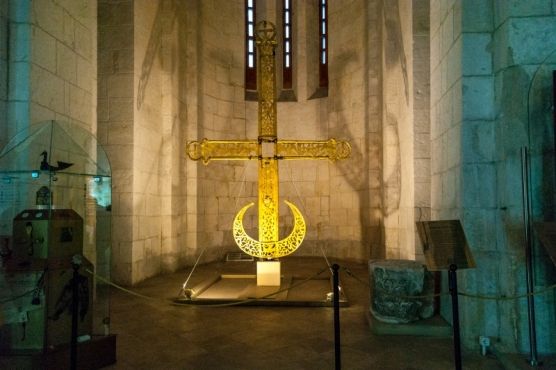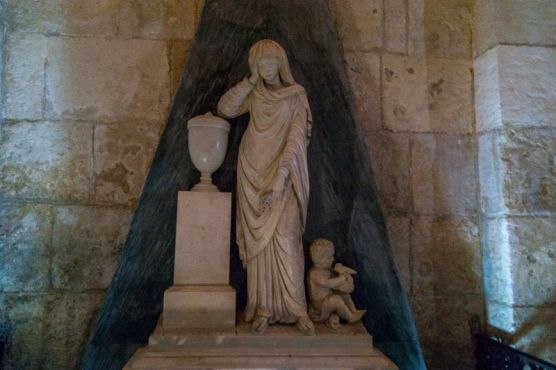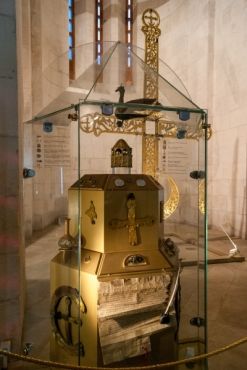Cathedral of St. Demetrius
The Cathedral of St. Demetrius, built between 1194-1197, occupies an outstanding place in the architecture of the North-Eastern Russia of the 12th century. It refers to the type of relatively small four-pillared single-domed temples. This is the palace temple of the strongest feudal lord of the 12th century – Prince Vsevolod III the Big Nest, created by local craftsmen and architects at the zenith of his glory.
The christian name of Vsevolod is Demetrius. Expelled by his elder brother, the reigning Andrey Bogolyubsky, young Vsevolod- Demetrius lived for seven years in Byzantium, where the relics of St. Demetrius of Thessaloniki were kept in the Basilica of Thessaloniki. Only many years later, when Vsevolod returned to his homeland and became the Vladimir prince, he embodied the idea of creating a temple of his heavenly patron. In 1197, an icon of St. Demetrius of Thessaloniki was brought up from Thessaloniki to Vladimir – a "coffin board" that expired in the curative chrism (in Vladimir the icon was located until the end of the 14th century, and probably after the Battle of Kulikovo in 1380 it was moved to Moscow, where it is kept in the Assumption Cathedral of the Moscow Kremlin). And another relic was brought from Thessaloniki – a "shirt" of St. Demetrius of Thessaloniki (that is, a piece of clothing or cloth), stored in a silver ark, decorated with embossing. In fact, the cathedral became a reliquary – a repository of relics of St. Demetrius – and a palace temple of the "great Vsevolod", as the prince was called by chroniclers. The divine service was performed only for the princely family and its entourage.
In the image of the Cathedral of St. Demetrius, the idea of prince's power of Vsevolod III is brilliantly embodied. The majestic form of the cathedral is not created by grandiose dimensions (its width is only about 15 m, the outer height to the top of the dome is about 30 m), but with balanced proportions and magnificent openwork carving that covers its white stone walls. One-and-a-half thousand carved stones are located on the facades of the church. Almost all the decorative wealth is concentrated on the walls of the middle tier of the cathedral and the drum of its head. The reliefs are arranged in flat horizontal "rows" corresponding to rows of white stone masonry, which emphasized the "ponderability" of the prince's cathedral. However, creating an exquisite carving of the temple, the architects did not lose their sense of proportion: the clear constructive lines of the pilasters cut through the relief carpet, arranging it and subordinating it to an amazingly beautiful architecture.
For more than one century, attempts have been made to unravel the meaning of quaint stone patterns. Among the themes of carvings decorating the cathedral, you can find both biblical and pagan symbols. In the central zakomars of the facades the figure of the biblical tsar, the psalmist and the prophet David is placed three times. Around David – beautiful reliefs of lions in proud, victorious poses, which are symbols of royalty and supreme patronage. The same meaning had leopards and griffins (winged beasts), eagles, which are also depicted on reliefs. And you can also see a doe and a dove – symbols of humility and meekness. Pheasants, peacocks and even geese allegorically show the world of spiritual reality. Rows of bizarre animals alternate with plant ornamentation.
Two large sculptural compositions deserve special attention. One (in the eastern zakomar of the southern facade) depicts the scene of the "Ascension of Alexander the Great" from the popular medieval story "Alexandria". Alexander sits in a basket and holds small lions in his hands, which serve as bait for winged monsters- griffins, tied to a basket and dragging the king up. This fantastic scene was a symbol of the glorification of the royalty and well served the general idea of the palace cathedral of Vsevolod III. Another composition, located symmetrically "Ascension of Alexander" (in the eastern zakomar of the northern facade turned to the city), as it is commonly believed, perpetuates the grand duke Vsevolod the Big Nest himself. He sits on the throne with his newborn son Dmitry on his knees, surrounded by the other sons who worship the prince-father.
Considering the reliefs, it should be remembered that they suffered greatly for the centuries-old life of the monument, there were replacements by new reliefs and a different arrangement of ancient samples. In 1238 the church together with the city of Vladimir survived devastation from the Horde troops. The cathedral burned many times in the 16th and 18th centuries. In addition, as a result of the notorious "restoration" of 1837-1839, by order of Nicholas I, the cathedral was given a "primordial appearance" and it lost its most interesting parts – stair towers and galleries. The fact is that the temple originally had extensions, because it was part of the prince's court. The cathedral was surrounded by galleries (3 m wide) on three sides, closing its lower tier with their arches. At the corners the galleries ended with wide towers connecting the court temple with a residential palace. In 1838, the ancient galleries and towers were dismantled, and the cathedral acquired the familiar form for us. In this case, many of the lost reliefs had to be cut anew, or carved stones were added from the towers. After the demolition of galleries and towers, playing the role of additional pillars, the cathedral began to collapse. In the middle of the 20th century, the internal structures of the building were strengthened with metal and reinforced concrete connections, some of which are now visible under the drum from inside the cathedral. The process of destroying the building was stopped.
The white stone itself needs restoration. The aggressive environment of the modern city is destructive to the reliefs knocked out in limestone. In recent years, restorers have been covering the facades with a special protective mixture, using the traditional experience of keeping a white stone building.
For a long time, the Cathedral of St. Demetrius was closed for conservation, and was opened to visitors only since 2005. Now inside the building there is a museum exposition. In fact, the most important part of it is the preserved unique frescoes of the 12th century: in the central arch beneath the choir-gallery there are pictures of twelve figures of apostles-judges on thrones and angels behind them, in a small arch under choirs – scenes of paradise. The painting of the Cathedral, characterized by spirituality of images, plasticity of figures, a thin combination of colors, is an original monument of the classical Byzantine style of the late 12th century.
In the altar of the cathedral there is a copy of the ancient cross of the 12th century from the head of the temple, which is a carcass of the 18th century, covered with brass in 1957 (height of the cross – 4.07 m, sweep of the cross – 2.78 m). In 2002, it was replaced by an existing cross, as it collapsed because of the proximity of two metals – black (iron carcass) and colored (copper and brass sheets). The exposition also presents several fragments of the original cross of the 12th century, made of gilded copper.
Inside the Cathedral of St. Demetrius today you can see the only burial with a gravestone: in spite of the fact that the cathedral did not have a necropolis, in 1783 the first Vladimir governor R.I. Vorontsov was buried here – out of respect for his services and by his will. Church services in the cathedral are held very rarely, only five times a year, including on November 8, the day of memory of St. Demetrius of Thessaloniki.
The Cathedral of St. Demetrius as one of the precious pearls of world culture was included in the UNESCO World Heritage List in 1992.
 Tourism portal of the
Tourism portal of the